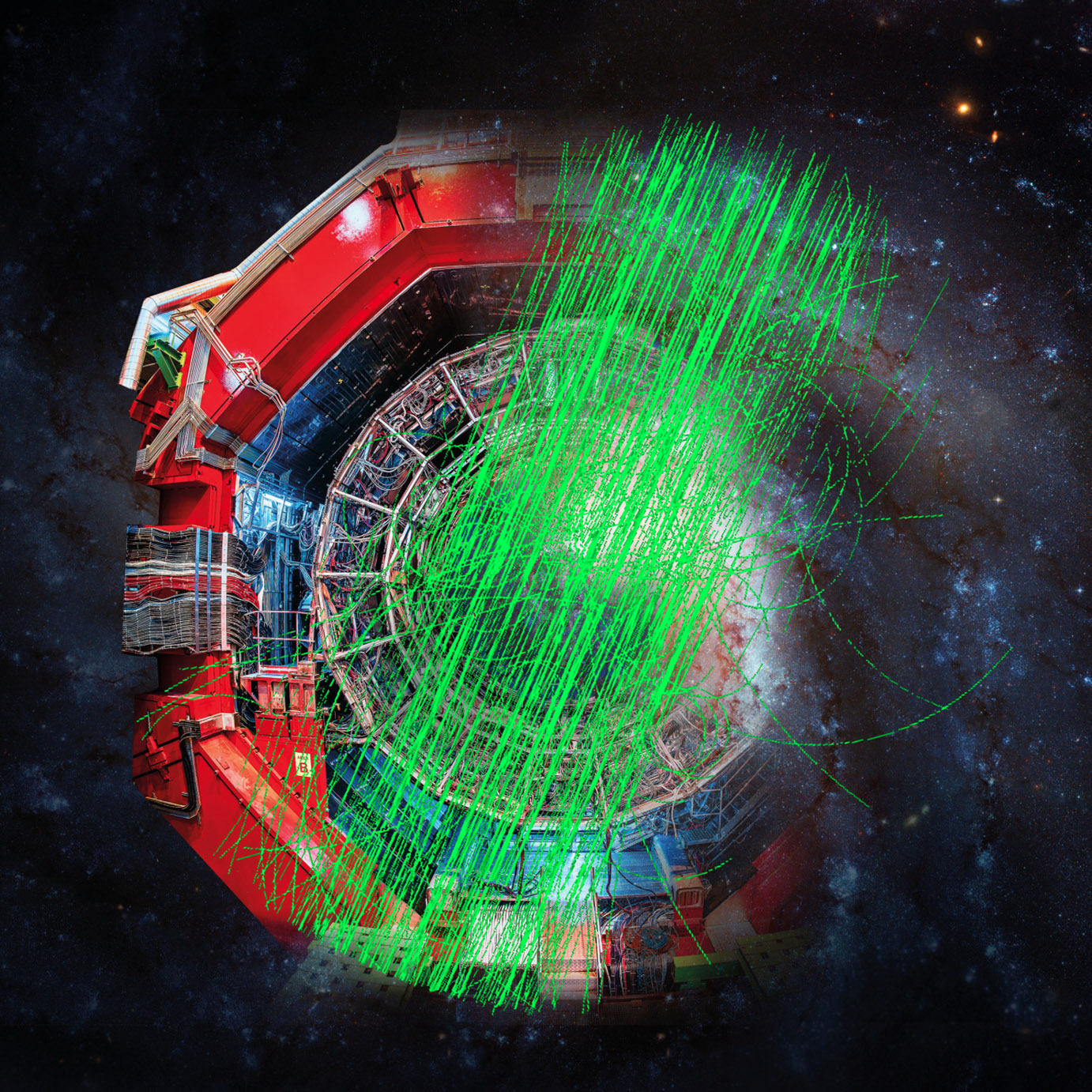
2 June 2025
CERN News: ALICE eyes the cosmos
ALICE article in Journal of Cosmology and Astroparticle Physics
New data from the ALICE experiment, collected when no particle beams were circulating in the LHC during pauses in Run 2, may contribute to solving a puzzle surrounding cosmic muons!
Cosmic rays are high-energy particles from outer space that strike Earth’s atmosphere, generating showers of secondary particles, such as muons, that can reach the planet’s surface. In recent years, ground-based experiments have detected more cosmic muons than current theoretical models predict, a discrepancy known as the muon puzzle.
Underground experiments offer good conditions for the detection of cosmic muons, because the rock or soil above the experiments absorbs the other shower components. They could therefore help to solve the muon puzzle. One example is ALICE at the Large Hadron Collider (LHC). Designed to study the products of heavy-ion collisions, ALICE is also well suited for detecting cosmic muons thanks to its location in a cavern 52 metres underground, shielded by 28 metres of overburden rock and an additional 1 metre of iron magnet yoke.
In a recent article published in the Journal of Cosmology and Astroparticle Physics, the ALICE collaboration reports the detection of around 165 million events containing at least one cosmic muon, as well as 15702 events with more than four cosmic muons. This large sample was collected between 2015 and 2018 during pauses in LHC Run 2, when no particle beams were circulating in the collider. The total data-taking time amounted to 62.5 days – more than double the duration of the previous cosmic-ray campaign in LHC Run 1 (2010–2013), which recorded approximately 22.6 million events with at least one muon.
By analysing how the number of events varies with increasing muon multiplicity (the number of muons per event), the ALICE collaboration observed a smooth, decreasing trend from a multiplicity of 5 to a multiplicity of 50, beyond which the numbers of events are very small and subject to large statistical uncertainties (figure below).

Muon multiplicity distribution of events with more than four muons, as measured by ALICE over a period of 62.5 days. (Image: ALICE)
The ALICE researchers compared this decreasing muon multiplicity distribution with simulations based on three models of secondary-particle production and assuming two extreme compositions of primary cosmic rays – hydrogen nuclei (protons), representing the lightest possible composition, and iron nuclei, representing a very heavy composition.
These comparisons showed that the measured distribution corresponds to primary cosmic rays with energies ranging from 4 to 60 PeV, where 1 PeV is 1015 electronvolts. In this energy range, the composition of the primary cosmic rays is expected to be a mixture of nuclear species, from protons to iron. One of the three models reproduces the observed distribution, but only when assuming that the primary cosmic rays are composed of iron. By contrast, the other two models underpredict the event count even when assuming an iron composition. While these results suggest that heavy elements dominate the composition of the primary cosmic rays, they fail to account for the expected mixed composition and the increasing fraction of heavy elements as multiplicity, and thus primary cosmic-ray energy, increases.
Focusing on rare events with more than 100 muons, the researchers found that these high-multiplicity events are well described by two of the models when assuming an iron composition. These findings are compatible with an average energy of about 100 PeV for the primary cosmic rays that likely produced these events.
The new ALICE results confirm the discrepancy between ground-based data and models that constitutes the muon puzzle. Improving the models by incorporating these results from the LHC may help to solve the puzzle.
